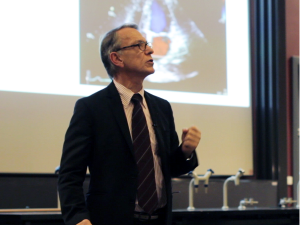The association between the risk of heart disease and dietary intakes of selenium remains unclear. Here we report the results of some of the recent observational studies on this topic.
Risk of Cardiovascular Disease

The association between the risk of heart disease and dietary intakes of selenium remains unclear. Here we report the results of some of the recent observational studies on this topic.

All-cause mortality, cancer mortality, and cardiovascular disease mortality are all three significantly associated with selenium status in the blood. Higher selenium status correlates with lower mortality risk. In particular, the inverse relationship with all-cause mortality was strong among different study populations in different countries and in different study regions. The inverse relationship was strong with different selenium measurement methods, with different study recruitment years, and with different study sizes and study follow-up lengths [Cui 2025].

These are the conclusions from a systematic review and meta-analysis of 20 observational studies that enrolled 67,534 study participants. The studies included 17 studies of all-cause mortality, 7 studies of cancer mortality, and 9 studies of cardiovascular disease mortality. The review shows that a concentration increase of one standard deviation in serum or plasma selenium biomarkers was associated with 13% lower all-cause mortality, 15% lower cancer mortality, and 11% lower cardiovascular mortality [Cui 2025].
Reduced risk of heart disease and reduced risk of some cancers. Increasing the daily intake of selenium among individuals with low selenium status may reduce the risk of cardiovascular disease and some cancers. The available data seem to show that most adults in the Nordic and Baltic countries, with the exception of adults in Finland, have low selenium intakes and low selenium status [Alexander & Olsen 2023].

Selenium is an essential trace element. The human body cannot synthesize it. It must come from the diet and supplements. Selenium is a vital component of selenoproteins that are critical to normal health and physiological functioning. This is the fundamental message from a 2023 selenium scoping review conducted for the Nordic Nutritional Recommendations 2023 [Alexander & Olsen 2023].
Cadmium leaking from iron water pipes into drinking water may be a primary cause of increased risk of atherosclerosis – the increased risk of a buildup of plaque on the inside of the artery walls with inflammation as a consequence. This is the thesis of the Danish cardiologist Anton Dorph-Petersen.

Dr. Dorph-Petersen asserts that the danger of cadmium toxicity is greatest in regions of the world in which the selenium content of the soil and plants is low and in regions of the world in which there is low dietary intake of selenium containing fish [Dorph-Petersen 2017].
Let me lay out Dr. Dorph-Petersen’s reasoning step by step. His hypothesis has not yet been verified by clinical trials.
However, we do know from a survey of 15,689 study participants in the US that low blood selenium and high blood cadmium are independent risk factors for heart failure.
Daily supplementation with 200 mcg of selenium and 200 mg of Coenzyme Q10 for four years has resulted in significant increases in serum SIRT1 concentrations. In the parallel placebo group, the serum SIRT1 concentrations decreased significantly [Opstad, Alehagen 2023].

This is the latest evidence from the KiSel-10 Study in which researchers randomly assigned elderly community-living Swedish men and women, average age: 76 years, 49% female, to a combined selenium and Coenzyme Q10 treatment group or to a placebo group [Alehagen 2013].
In earlier papers, the KiSel-10 Study researchers have reported beneficial effects of the combined supplementation of the elderly Swedish citizens with low baseline selenium levels [Alehagen 2022; Opstad 2022]:
Aging. Getting up in years. Striving to live as long as possible and to be as strong and healthy as possible. At some point, good health becomes a more important concern than wealth. Optimal selenium status is important to good health [Alehagen 2021].

In a review article, Professor Urban Alehagen and Professor Jan Aaseth list the following conditions associated with biological aging [Alehagen 2021]:
Getting old is inevitable. Biological aging necessarily involves a weakening of the immune system and increased susceptibility to diseases and environmental stresses.
Selenium deficiency is associated with mitochondrial dysfunction, oxidative stress, and inflammation [Alehagen 2021].
Mitochondrial injuries are an important factor in the aging of human cells. A by-product of the mitochondrial generation of ATP energy in the cells is the production of reactive oxygen species, some of which are useful and some of which are harmful. The leakage of these harmful free radicals from the mitochondrial respiratory chain increases with age, which results in cellular oxidative damage, whenever there are not enough antioxidants to neutralize the effects of the free radicals.
Heart disease prevention. In the KiSel-10 Study, combined supplementation of community living senior citizens for four years with an organic high selenium yeast (200 mcg selenium/day) and Coenzyme Q10 in the ubiquinone form (2 x 100 mg/day) prevented an increase in fibroblast growth factor 23 and reduced the risk of cardiovascular disease [Alehagen Feb 2022].

Professor Urban Alehagen explains that fibroblast growth factor 23 is a hormone that is secreted primarily from the osteocytes (i.e., mature bone cells) into the blood. From the blood circulation, the hormone acts on fibroblast growth factor receptors in the heart, intestine, kidney, and parathyroid gland [Alehagen Feb 2022].
Fibroblast growth factor 23 is mainly active in the metabolism of vitamin D and phosphorus. However, there have been reports that indicate an association between increased fibroblast growth factor 23 levels and cardiovascular mortality even in the patients with no sign of kidney disease [Alehagen Feb 2022].
Selenium exposure in the diet and in supplements: in this review article, we summarize the key outcomes of the best selenium exposure studies.
In his review of the available research literature, Professor Urban Alehagen, Linköping University, Sweden, concluded that a daily intake of 100–150 mcg of selenium per day is required.
This is the intake level that enables an optimal expression of the important selenoprotein P that transports selenium from the liver to peripheral tissues [Alehagen 2022]. For other selenoproteins to be optimized, i.e., to be fully expressed, Prof. Alehagen argues that selenium status of approximately 120 mcg/L when measured in red blood cells is necessary [Alehagen 2022].
Health benefits of daily supplementation of senior citizens with a combination of selenium and Coenzyme Q10:

The combined supplementation seems to work by reducing the extent of oxidative stress, systemic inflammation, and fibrosis in the study participants [Alehagen 2022a].
Now, data from the KiSel-10 Study show the following effects of the combined supplementation with respect to Fibroblast Growth Factor 23 concentrations in blood:
Prof. Alehagen explains that FGF-23 is a hormone that is secreted into the blood circulation. One of its primary functions is the regulation of the vitamin D metabolism and of the phosphorous metabolism in the kidneys.
However, there seems to be an association between FGF-23 activity and cardiovascular mortality even in the absence of kidney disease. Experimental data show that FGF-23 may act as a mediator for cardiac hypertrophy, cardiac fibrosis, and cardiac dysfunction [Alehagen 2022b].
Selenium is an essential trace element. Essential means that sufficient selenium is necessary for normal cell functioning and that our bodies cannot synthesize selenium for us. We must get it from our diets. Trace element means selenium is a micronutrient that is needed in very small quantities, in microgram quantities. It may be an important element to slow the ageing process.

Sufficient selenium status plays an important role in the prevention of cardiovascular diseases, inflammation, and infections. Prof. Margaret P. Rayman, University of Surrey, estimates that serum/plasma selenium status of around 125 mcg/L is optimal for human health [Rayman 2020].
The beneficial work of selenium in the cells and tissues is done by selenoproteins that contain the amino acid selenocysteine in the active center. Among the selenoproteins known to have an antioxidant effect in the body are the glutathione peroxidases (GPX1-4 and GPX6) and the thioredoxin reductases (TXNRD1-3) [Alehagen 2021].